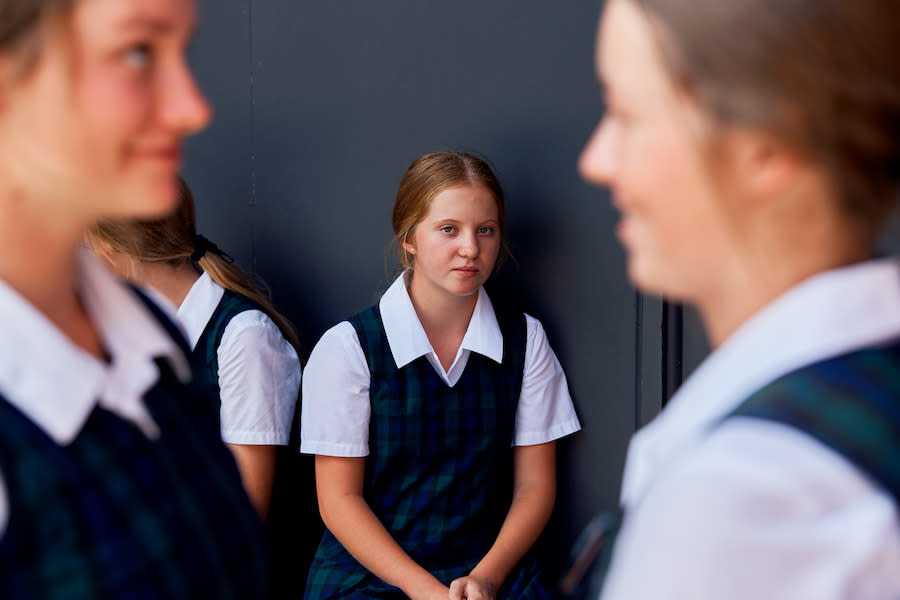Teenage bullying
Bullying affects teenagers to a concerning extent and can happen to anyone. Around one third of Australian students say they have experienced bullying at some point. Often people feel powerless against bullying. However, as parents it’s possible to take action against bullying to create safer environments for your child. Learn about what bullying is, why people do it and how to recognise bullying. Find out how to teach your child about handling bullying, and the importance of empathy and positive relationships.
This can help if you:
want to know more about what bullying looks like
want to understand why kids bully
want to understand the effects of bullying behaviour
suspect your child is being bullied
want to know ways that you can help your child.
What is bullying?
Bullying occurs when words or actions are repeatedly used to harm someone’s wellbeing. While there are times we can accidentally say or do things that are hurtful, it’s important to understand that bullying is deliberate behaviour. It’s done on purpose to make a person feel intimidated, threatened or powerless and is often ongoing.
Unfortunately, teen bullying can be common, particularly at school. But it can happen almost anywhere such as the workplace, at home and online.
Why do people bully?
There are many different things that can influence a person to bully others. Some common reasons include:
to feel powerful and in control
to cope with unhappiness or anger
peer pressure
having little empathy for others
to deal with self-esteem and confidence issues.
The motivations behind harmful bullying behaviour can often be tricky to pinpoint. It can sometimes be a combination of lots of different factors, so it’s best to keep an open mind when trying to understand why a person might be using behaviours that appear to be bullying. There might be lots of other things going on for them. However, if their behaviours are negatively impacting others, they should be addressed.
What bullying looks like
Bullying can be more than just nasty looks and teasing. It can come in lots of different forms, including:
name calling
spreading rumours or lies about someone
physical intimidation or harassment
targeting a person’s sexuality, religion, race, gender or disability
singling a person out to make them feel alone or different.
Spotting the signs of bullying
Signs to look out for if you suspect your child is being bullied include:
refusing to go to school or being anxious about going to school
doing badly in subjects they previously enjoyed and were good at
having trouble sleeping
withdrawing from social activities
having low self-esteem
missing belongings
having injuries they can't explain.
What are the effects of bullying?
Bullying effects include:
alone and helpless
unsafe and afraid
guilty, often blaming themselves for the bullying
stressed and anxious
depressed, sad or down.
Whether your child is being bullied or is somebody who bullies, it’s important to take active steps to address this behaviour. If you need further help with supporting your child through this issue, check out our list of things you can try to help your child with bullying.
Advice from a psychologist: Bullying
The teenage years can be particularly difficult for teenagers who experience bullying. They can feel isolated and afraid of the repercussions if they speak out or seek help. It can be difficult to know if your child is being bullied but there are some signs that you can look out for.
Watch the bullying educational video below to learn more about bullying and how to support your child through this difficult time. Psychologist Clare Rowe explains the impact that bullying can have on teenagers, what to look out for and what you can do if you suspect that your teenager is being bullied. Read the video transcript.
Bullying in the home
It’s important to recognise bullying at home, so that you can address it and make sure your child is learning healthy and positive relationship skills. A lot of the things our children learn about interacting with others comes from behaviour learnt at home.
Our relationships are not always easy, and sometimes we may find ourselves behaving in ways that other people may find hurtful or intimidating. Try to recognise factors that might lead to bullying behaviour. By calling out and addressing behaviour at home that might be exclusionary, controlling or hurtful, you will also demonstrate good conflict resolution for your child.
What to look out for:
Look out for times when family members or friends are:
teasing people inside or outside the family
forcing people to do things they don’t want to (outside of normal parental rules and consequences)
excluding people from activities
gossiping or spreading rumours about people
taking frustrations or worries out on the people around them
trying to force people to adopt their point of view.
If some of these things are happening in your family home, it is a sign there is bully-like behaviour happening. Your child could be learning to bully, or they may find the behaviour hurtful or intimidating.
Questions to consider:
Is your child frequently exposed to arguments, conflicts or relationship problems at home?
What is your child watching? What does it demonstrate about resolving problems? Maybe you could talk about what behaviours should not be translated from the tv screen into real life.
Is your family respectful and accepting of differences? How do you live by those values at home?
Is there sibling bullying? This is common, and often linked with bullying at school. How you handle fights between siblings can help them learn to relate more constructively to peers at school.
Learn more about modelling positive behaviours so you child can learn positive ways of relating and communicating with others.
